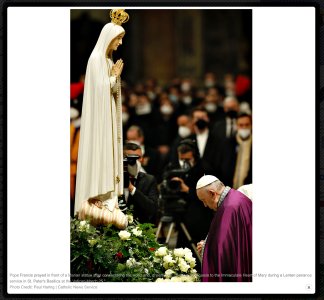Several places the Bible refers to first second and third class relics being efficacious,
There is a problem here-
The concept of relics as efficacious—that is, possessing the power to confer spiritual benefits or healing—
is not directly supported by Scripture. While there are references in the Bible to objects or people being associated with God's power or presence, the idea of first, second, and third class relics (a term specific to Catholic tradition) and their efficacy
does not appear explicitly in the Bible.
What are relics in Catholicism?
In Catholicism, relics are physical objects that are venerated because of their association with a saint or with Jesus Christ. These relics are categorized as:
First-class relics: Actual parts of a saint’s body (e.g., bones, hair).
Second-class relics: Items that a saint personally owned or used (e.g., clothing, tools).
Third-class relics: Items that have been touched to a first-class relic or the tomb of a saint.
Relics are believed to be efficacious in the sense that they are seen as a means through which God might work miracles, healings, or convey blessings. However, this practice is not explicitly outlined in Scripture.
Biblical Context: Objects and God's Power
There are instances in the Bible where physical objects are connected to God's power, but these instances are not the same as the Catholic understanding of relics. Let’s look at a few examples:
The Healing Power of the Apostle Paul's Handkerchiefs:
Acts 19:11-12: “And God was doing extraordinary miracles by the hands of Paul, so that even handkerchiefs or aprons that had touched his skin were carried away to the sick, and their diseases left them and the evil spirits came out of them.”
This demonstrates that items associated with a person (in this case, Paul) could be used by God to heal. However, this is not the same as veneration or worship of the object itself.
The Healing Power of the Ark of the Covenant:
2 Samuel 6:6-7: When Uzzah touched the Ark of the Covenant, he was struck dead. However, the Ark was treated with great reverence because it represented the presence of God. It was not the object itself that had inherent power, but rather God’s presence that was associated with it.
The Bronze Serpent:
Numbers 21:9: “So Moses made a bronze serpent and set it on a pole. And if a serpent bit anyone, he would look at the bronze serpent and live.”
Here, the people were healed by God’s instruction through the bronze serpent, but it was a symbol of God's mercy, not a relic worshipped for its own sake.
Jesus’ Healing Power through Contact:
Mark 5:27-34: “She had heard the reports about Jesus and came up behind him in the crowd and touched his garment. For she said, ‘If I touch even his garments, I will be made well.’ And immediately the flow of blood dried up, and she felt in her body that she was healed of her disease.”
This is a direct example of an individual being healed by touching Jesus' garment, yet the power was not in the garment itself, but in Jesus' divine power.
The Bible's Teachings on Objects and Worship
The Bible consistently teaches that worship and adoration are reserved for God alone, not for physical objects or persons. The Second Commandment in Exodus 20:4-5, for example, prohibits the making and worshiping of idols:
“You shall not make for yourselves a carved image, or any likeness of anything that is in heaven above or on the earth beneath or in the waters beneath the earth. You shall not bow down to them or serve them.”
Although the Bible contains instances of objects being used in connection with God's work (like the examples above), there is no scriptural support for the notion that relics themselves have inherent efficacy or power apart from God's will.
The idea that first, second, and third class relics are efficacious in and of themselves is not found in Scripture. While the Bible does reference objects associated with God’s power (e.g., Paul’s handkerchief, the Ark, the bronze serpent), these objects do not carry inherent power or merit but are simply tools through which God chose to act. Worship or veneration of relics as efficacious is a doctrinal development in certain traditions (especially in Catholicism), but it is not explicitly grounded in biblical text. The Bible stresses that it is God’s power, not objects, that brings healing or salvation.
J.


